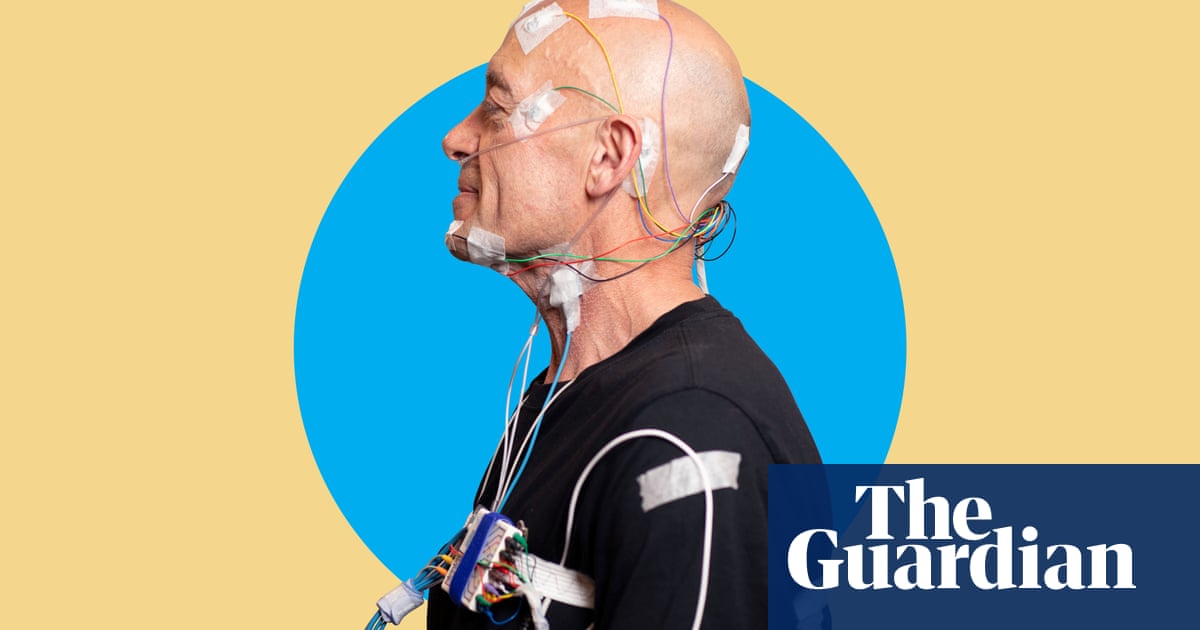
here are things I can’t say here. Men I dare not name. The first man I ever had sex with. A man I loved for three months in 1988. That hilarious friend I spent a mad week with in Glasgow. All of them dead, now. And they all died of Aids.
But I can’t say their names because their families said they died of cancer or pneumonia. And they maintain that story to this day. Even now, I’ve had to change a few details in those opening sentences, just in case. The stigma and fear of Aids was so great that a family could go through the funeral, the wake and then decades of mourning without saying what really happened.
A virus had jumped species, probably from chimpanzees. But we couldn’t have known that, back in the 1980s. So as the decade unfolded and HIV proliferated, we had to cope with terror and anger but also, more insidiously, sheer disbelief. An illness? Which attacks gay men only? A gay plague?! Impossible! (And yes, I know, it can infect anyone, but forgive me a middle-aged gay man’s perspective. At the time, if felt like it was targeted at us.)
The hysteria quickly caught fire, because fake news, false facts and conspiracy theories weren’t invented in 2020. They ran riot with Aids in the 1980s. If you think the internet is to blame for misinformation, I can guarantee the problem existed long before I even had an electric typewriter.
It’s hard to look back and reconstruct how information was spread in those early days, ’81, ’82, before the tabloids got hold of the story. Rumours. Mutterings. Whispers from America. Chat in the dark corners of pubs. A few brave activists photocopying what little information they had; the photocopied sheets you ignore when out clubbing. I can remember the exact moment I took it seriously for the first time. June 1983, I was a student in Oxford. I went to buy milk, 20 Bensons, and my proud passport into adult life, the monthly copy of Him magazine. Except I wasn’t that proud and shuffled it under a copy of the Mirror. I didn’t actually look at it until I was walking home. And I stopped. Right there. On Juxon Street. Blazing sunshine. I stared at the headline. “Aids Gay Death-Plot Panic.” The words emblazoned across a brilliant and erotic drawing of naked men boiling to death in a test tube, drawn by the artist Oliver Frey.
Oh, I thought, it’s real. That story. It’s true.
I wonder if that magazine saved my life.
Even then, the truth was surrounded by nonsense. That headline called it a plot, because that’s what everyone said – the virus was created by the Russians, the Chinese, the Americans, it had escaped from some villainous hi-tech secret laboratories (sound familiar?), it was sent by God to strike down the sinners. It was said, impossibly, that it affected only homosexuals, Haitians and haemophiliacs, like it only went for people beginning with the letter H. Ridiculous! Surely? How could that be true?
It’s said that ignorance kills. But sometimes we die because we’re so bloody smart.
Then the tabloids took control, and the screaming started. In 1983, the Sun declared: “US Gay Blood Plague Kills Three in Britain.” This had escalated by 1986 into: “I’d Shoot My Son if He Had Aids, Says Vicar.” (For the record, that’s the Rev Robert Simpson of Barmston, Humberside. Although in fairness, his son, “Bewildered Chris”, did add: “Sometimes I think he would like to shoot me whether I had Aids or not.”) Then showbiz added a ghastly glitter. Rock Hudson was declared to be dying from Aids, and the whole country, me included, engaged in an awful, vicious, gleeful game, staring at Dynasty to see if he kissed Linda Evans, hoping for a string of saliva to condemn him. And when Liberace died in 1987 – the result of a watermelon diet, said his staff – a helicopter chased and filmed his coffin being taken to the autopsy.
Far away from the glamour, men were sacked and bullied and hated. And the jokes began. I can remember seeing a joke I won’t repeat about dead gay men on a noticeboard at work, in an advert for the Christmas charity raffle. And no one complained.
I certainly didn’t. I just keep my head down and let it happen around me. History is written by the activists – I look with awe at the fury which drove Larry Kramer. In 1983, he wrote an article for the New York Native, “1,112 and Counting”, which radicalised the entire debate, and then in 1985 he wrote that astonishing howl of pain, The Normal Heart (to be revived at the National Theatre later this year).
But me? I looked away. Oh, I went on marches and gave a bit of money and said how sad it was, but really, I couldn’t quite look at it. This impossible thing. There are boys whose funerals I didn’t attend. Letters I didn’t write. Parents I didn’t see. Late last year, I bumped into the father of a good friend who’d died in 1992. We chatted, politely, hopelessly, and I flailed around, wondering how to apologise after all this time for not going to the funeral. But then I realised it hardly mattered. No one went. The shame had been so great that they only had 25 people for a lovely, lively lad, dead by 28.
They were comparatively lucky to have had a funeral at all. Back then, there were undertakers who refused to handle the bodies. Crematoriums that turned people away in case their staff were contaminated. Some lonely funerals happened at night, so no one could see.
I kept typing, just doing my job, while the situation escalated, both in Parliament and on the streets. The government released its infamous Aids advert, all tombstones and icebergs, with John Hurt gravely intoning the warning: “It is a deadly disease and there is no known cure.” As a result, Margaret Thatcher made a whole generation of gay men scared of sex, which was probably a bonus for her. And up north, the chief constable of Greater Manchester, James Anderton, announced that homosexuals were “swirling around in a cesspool of their own making”. (He also advocated the return of corporal punishment, saying “I’d thrash some criminals myself, most surely”, which is perhaps revealing a little too much. And just like the Rev Robert Simpson, he was upstaged by his own child when his daughter came out as a lesbian.)
While the Andertons of this world shouted out loud, the haemophilia scandal was happening in silence. Around 5,000 patients with bleeding disorders were infected by contaminated clotting factors. The horror is still being unearthed to this day, with the public inquiry initiated by Theresa May in 2017 still ongoing.
But back in the 80s, amazing work was being done by unsung and unfunded crusaders. In 1985, a man with Aids was actually imprisoned within a British hospital, the Monsall in Crumpsall. At the request of the man’s consultant, a court order was granted to lock the door and refuse him the right to leave. The case became one of the first activist uprisings. Gay groups organised and campaigned. Ten days later, the order was withdrawn. The fightback was just beginning.
I stayed busy, looking away, but I suppose I also looked down. At the keyboard. And stories began to emerge in my work. Rising up. Bleeding through the page. In 1994, I created a 15-year-old HIV+ teenager for Children’s Ward at Granada Television. Then, after I’d invented a raft of gay characters for various soaps – a lesbian vicar, schoolboy lovers, a gay barman in 1920 – I came to invent Queer As Folk in 1999. Britain’s first gay drama. And the words HIV and Aids were said… not once.
That was quite a press launch. The rage, the shouting! Two hundred journalists in full pomp. The straight press were as hostile as you’d expect, but the gay press were especially furious because we had no condoms, no warnings, no messages on screen. Well, yes, tough. Because by that stage, in 1999, I refused to let our lives be defined by disease. So I excluded it on purpose. The omission of Aids was a statement in itself, and it was the right thing to do.
In truth, the virus does tick away in the background of QAF. There are charity nights, a fleeting mention of a dead friend, and in one episode, a character has a one-night stand which results in his death. It’s caused by an overdose, but the man he hooks up with is called Harvey. I said to the producer, Nicola Shindler, “Harvey? D’you get it? Har-vee, like HIV.” She said, “Don’t be so pretentious. Never tell anyone that.”
The subject crept closer to the surface. In 2015, I wrote a series called Cucumber, in which Vincent Franklin gives a brilliant, brutal performance as Henry, a middle-aged man just beginning to work out why he’s so scared of intimacy, of love, of sex. Of himself. “Those bloody icebergs,” he mutters in episode five, giving away more than he realises.
Finally, I came to write a show with Aids centre stage. I think I had to wait till now, to find what I wanted to say. Over the years, I’d admired many magnificent pieces on the subject: Angels in America, Pose, Pride, Holding the Man, 120 Beats Per Minute ; and it was a privilege to leave a West End theatre with the audience heartily sobbing, after Matthew Lopez’s The Inheritance. But I needed to slalom my way around this stuff, to find my own path.
I talked to experts and consultants and charities, but mainly, I went back home. To my friend Jill. We’ve known each other since we were 14, daft camp kids belonging to a wonderful youth theatre in West Glamorgan which was accidentally, brilliantly, the safest gay space imaginable. As we grew up, I went to university, got a job, started to write, but Jill lived a bigger, better life. She went to London. Became an actor. She moved into a flat which she called the Pink Palace, and it felt like an endless party, the rooms filled with gay men and drag queens and show tunes. Jill met the crisis head on. She stood at the heart of the storm. She went to the hospitals and the funerals and the marches. She held the hands of so many men. She lost them, and remembered them, and somehow kept going.
So I’ve written a drama with a woman called Jill living in a Pink Palace. And my Jill now plays the fictional Jill’s mother. Like it was meant to be.
I sifted through her thousand stories – a strange thing to do with an old friend, to say “Tell me your life.” The things I never knew! But slowly, the drama took shape, inspired by one story she’d first told me way back in the 90s. A story which had haunted me for decades. A man I knew, too. With a horror story at the heart of it; a man whose parents didn’t know anything until they turned up at the hospital to discover he was gay, he had Aids, he was dying, all in one moment.
And he’s another man whose name I can’t say. I asked Jill about his family. “Still angry,” she said. After all these years.
I hope we’ve done him justice. That beautiful boy.
But the fight goes on. The stigma still exists. Today, I’m honoured to be patron of the George House Trust in Manchester, and the staff tell stories every day of the same old ignorance and fear. Just last month, a friend of mine was attempting to adopt a child and had his HIV status mentioned in court, for no good reason, three times. And in 2019, the rugby star Gareth Thomas was forced to reveal that he’s HIV+ after a tabloid reporter doorstepped his parents and told them his status.
And yet, at the same time, the world turns and life moves on. The growing success of antiretroviral medication means that, perhaps, an end is in sight. A deadly disease is becoming a manageable condition. There’s now an ambitious United Nations campaign dedicated to ending HIV transmission by 2030.
Strange to think. That it might come and go within my lifetime. That a virus can be a moment in history and no more. I wonder. It’s possible that one day, HIV and Aids might just be a memory. A story. Like some old drama that was once on TV.












